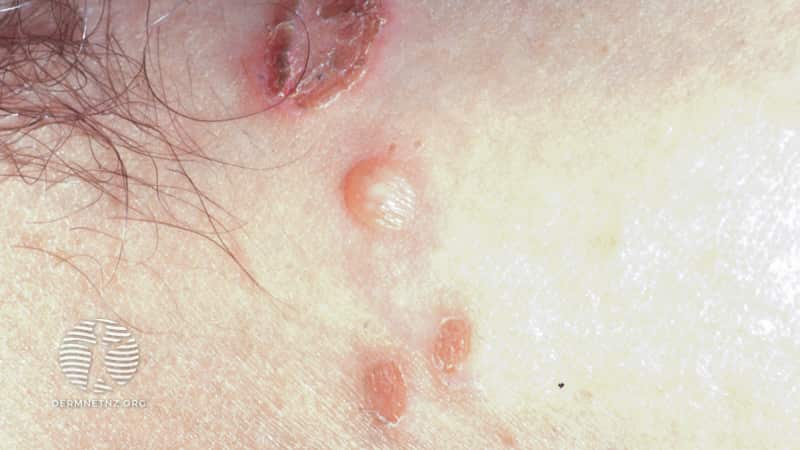Main menu
Common skin conditions

NEWS
Join DermNet PRO
Read more
Quick links
Rugby player with painful weeping lesions
Last reviewed: October 2022
Author: Dr Ian Coulson, Consultant Dermatologist and Editor-in-Chief, 2022.
Edited by the DermNet content department

Background
This 18-year-old school student and star rugby player has developed painful weeping lesions in the last 4 days in his right axilla.
What is the likely diagnosis?
The unilateral development of superficial, blistering lesions that are rupturing to produce honey-coloured crusted lesions is highly suggestive of bullous impetigo.
The condition is infectious and spreads by both fomites and direct skin-to-skin contact. The causative Staphylococcus aureus bacterium produces a toxin that causes splitting of the epidermis just below the granular layer of the epidermis. This produces superficial epidermal blistering that rupture easily, so blisters are only occasionally seen.
How should this be confirmed?
Skin swabs will result in the growth of S. aureus, bullous impetigo is usually due to sensitive strains rather than methicillin-resistant Staphylococcus aureus (MRSA), so that it usually responds to flucloxacillin. Macrolide-resistant strains can cause bullous impetigo.
How should he be managed?
Management involves gentle removal of crusts by the use of soaks, and a 5-7 day course of oral antibiotics — flucloxacillin is often the first-line choice. An antiseptic cream should also be used concurrently to help reduce infectivity.
Sharing of personal hygiene items such as towels and face cloths should be avoided. Close physical contact with others (eg, contact sports) should be avoided until the areas have crusted.
